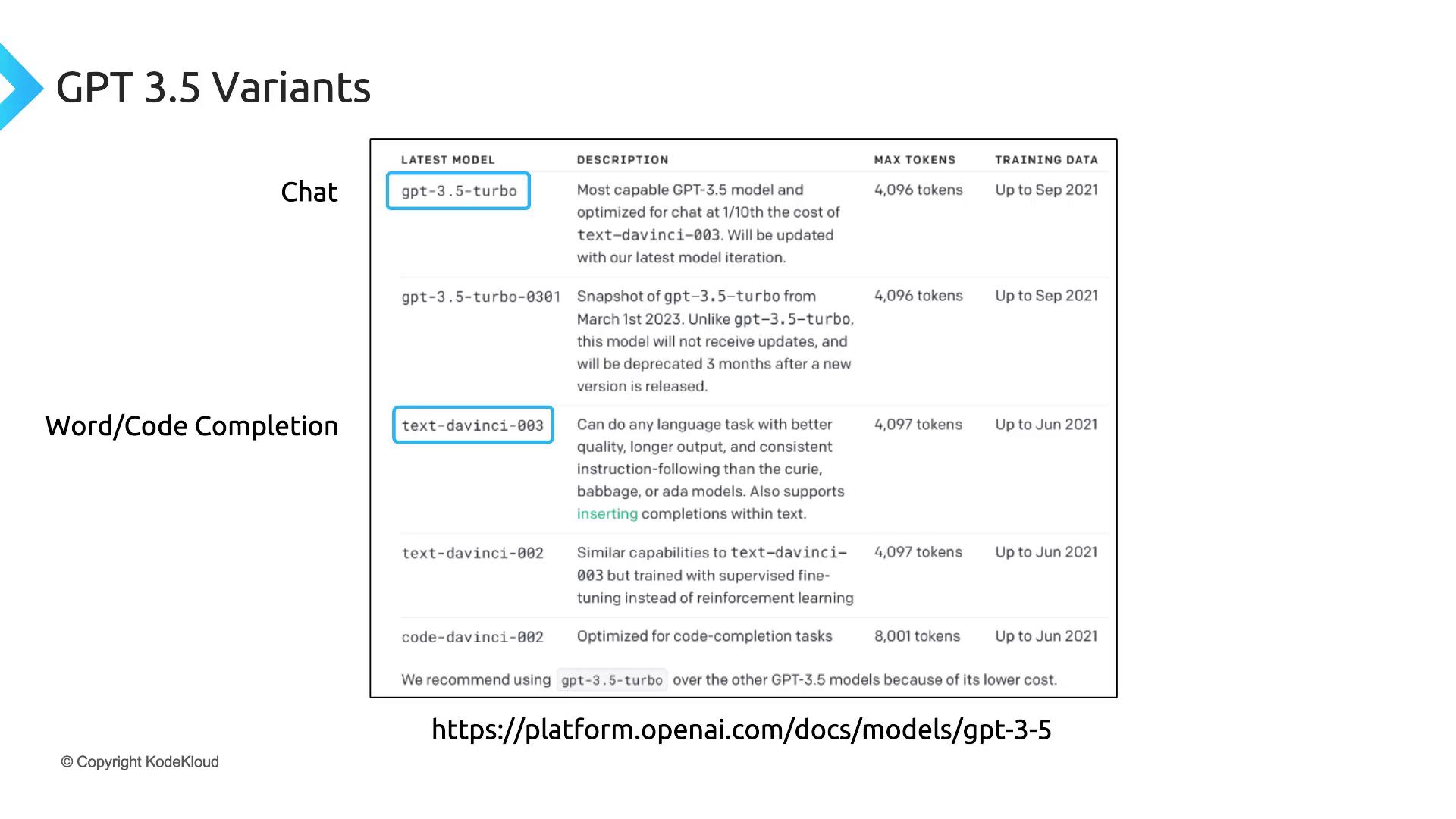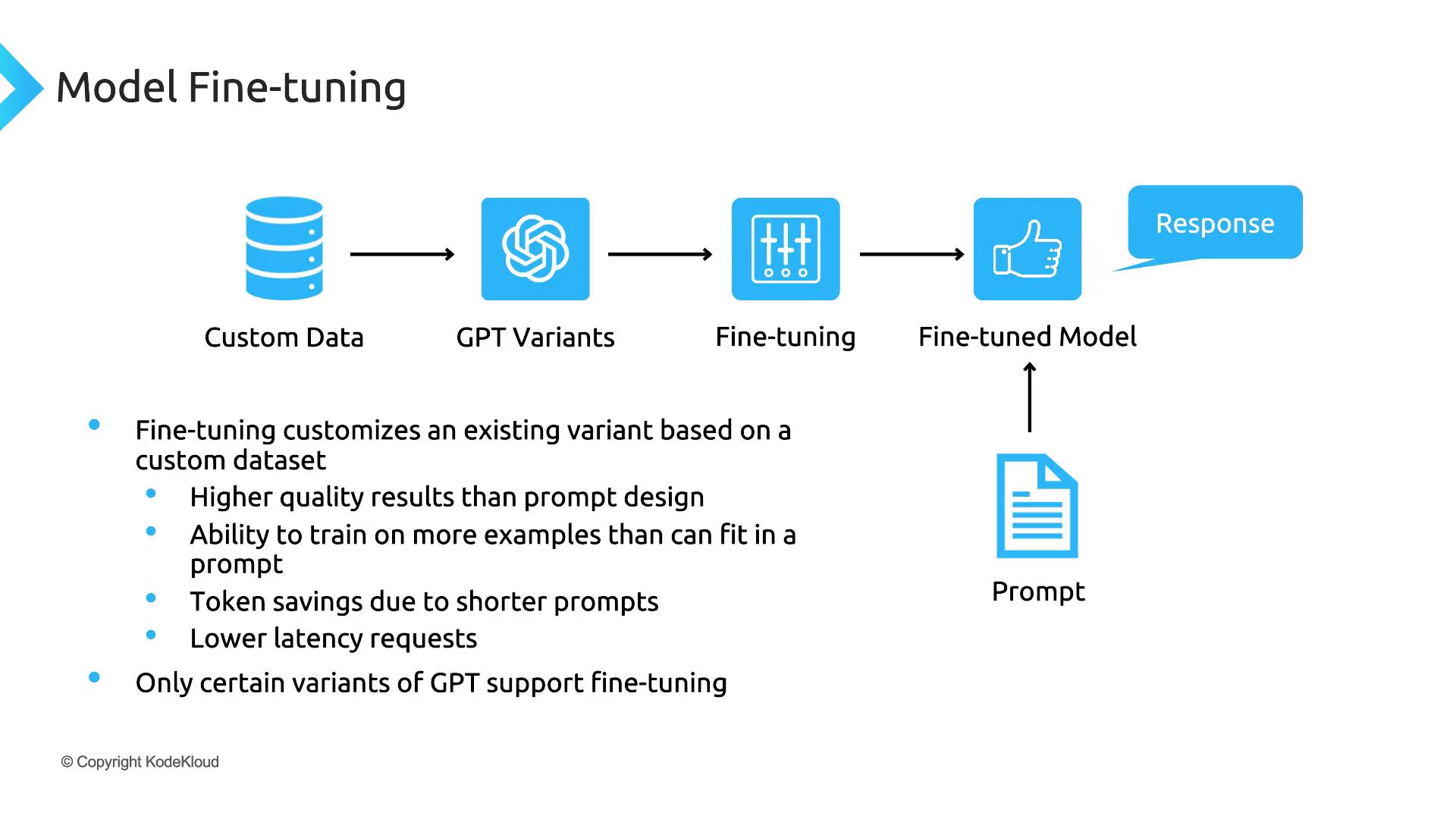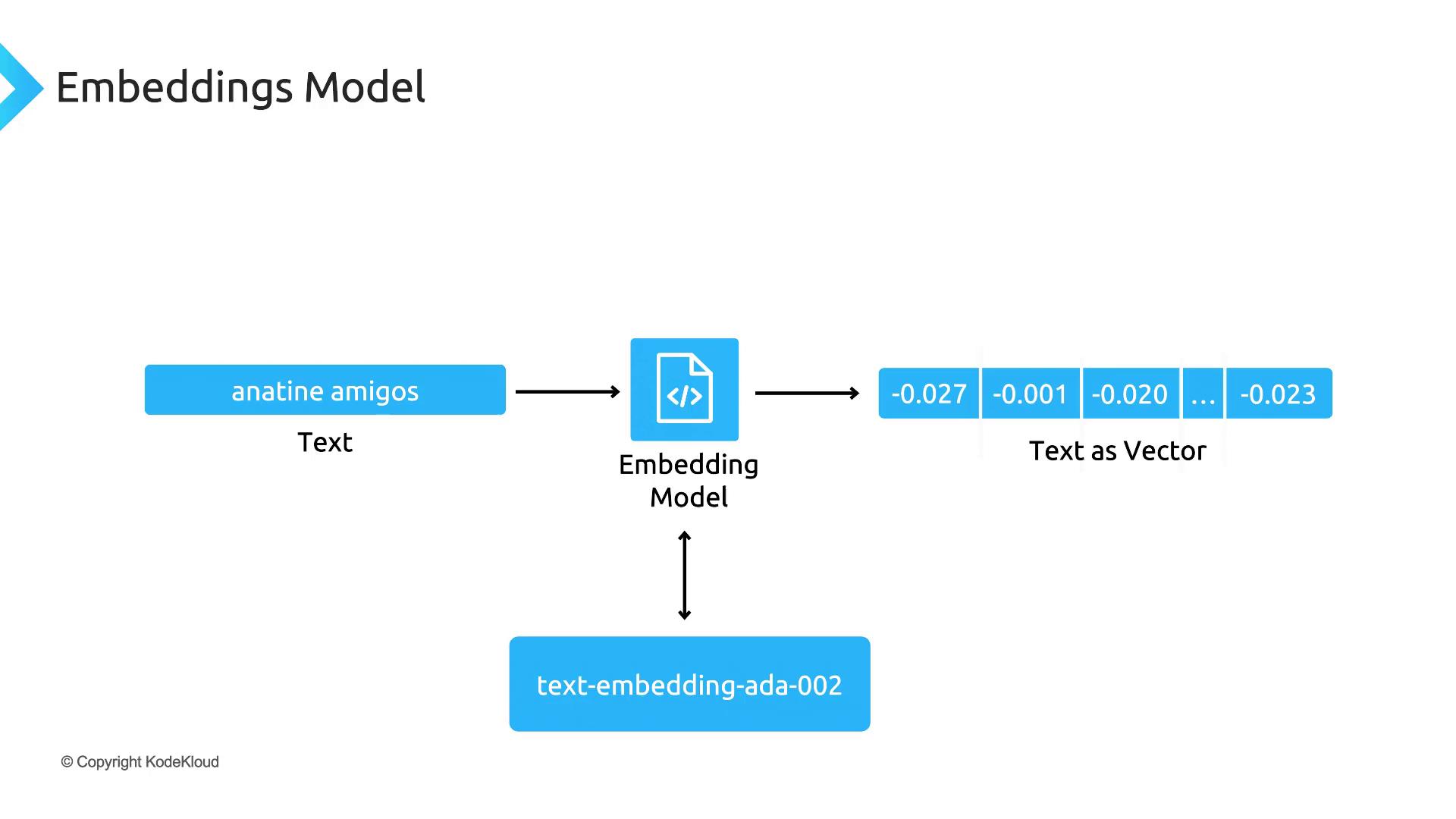Mastering Generative AI with OpenAI
Getting Started with OpenAI
OpenAI Model Variants
OpenAI’s API provides a rich set of model families and variants, each optimized for specific use cases—from code completion to conversational AI. Choosing the right model can help you balance performance, cost, and accuracy.
Model Families and Variants
A model family groups related variants by their primary function. Each variant carries a version identifier reflecting its training improvements and feature set. Below is a high-level overview:
| Model Family (Use Case) | Variant | Optimized For |
|---|---|---|
| Davinci (Natural Language) | text-davinci-002 | Instruction following |
text-davinci-003 | Advanced NLU and generation | |
| Codex (Code Completion) | code-davinci-002 | Code autocomplete and synthesis |
| GPT-3.5 (Chat & Completion) | gpt-3.5-turbo | Low-latency chat and multi-turn support |
GPT-3.5 Variants Overview
The GPT-3.5 series balances capability and cost with varying token limits and data cutoffs:
| Variant | Max Tokens | Training Data Through | Primary Use Case |
|---|---|---|---|
text-davinci-003 | 4,096 | June 2021 | Natural language tasks |
gpt-3.5-turbo | 4,096 | September 2021 | Chat-style interfaces |

Note
gpt-3.5-turbo is optimized for multi-turn dialogues and often delivers lower latency and cost for chat applications.
OpenAI continually refines these variants, improving response quality, speed, and cost-effectiveness.
Fine-Tuning Models
Fine-tuning allows you to customize a base model on your domain-specific dataset. Benefits include:
- Domain-tailored responses with higher relevance
- Shorter prompts, reducing token usage and cost
- Faster inference, since context is baked into the model

Fine-Tuning Workflow
- Format your dataset in JSONL with prompt–completion pairs.
- Upload data and create a fine-tuning job via the CLI or API.
- Monitor training, evaluate performance, and deploy your custom endpoint.
Warning
Ensure your training data is clean, balanced, and representative. Low-quality data can degrade performance.
Embeddings and Semantic Search
Embeddings convert text into vector representations for advanced applications:
| Use Case | Description |
|---|---|
| Semantic Search | Retrieve documents based on contextual meaning |
| Recommendation | Suggest similar content or products |
| Entity Classification | Categorize text into predefined classes |
OpenAI’s text-embedding-ada-002 model generates high-quality embeddings at scale.

Other Model Families
OpenAI’s ecosystem extends beyond GPT and Codex:
Links and References
Watch Video
Watch video content